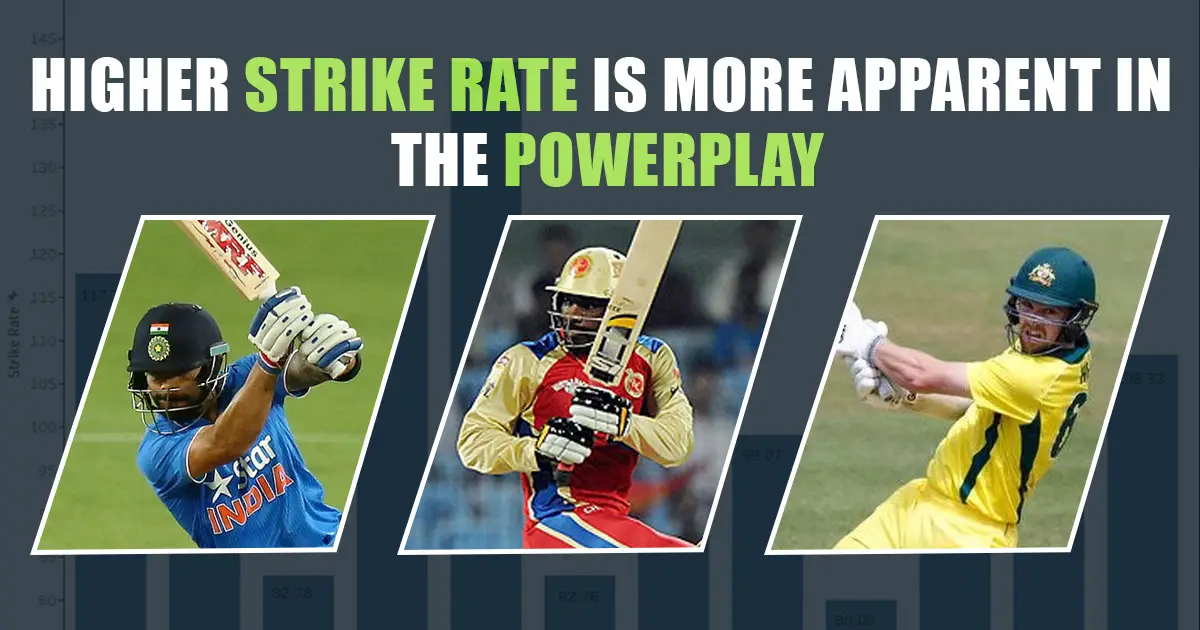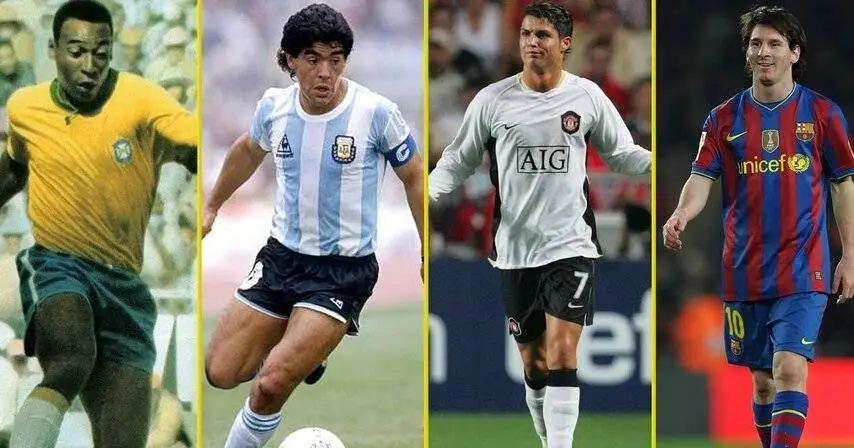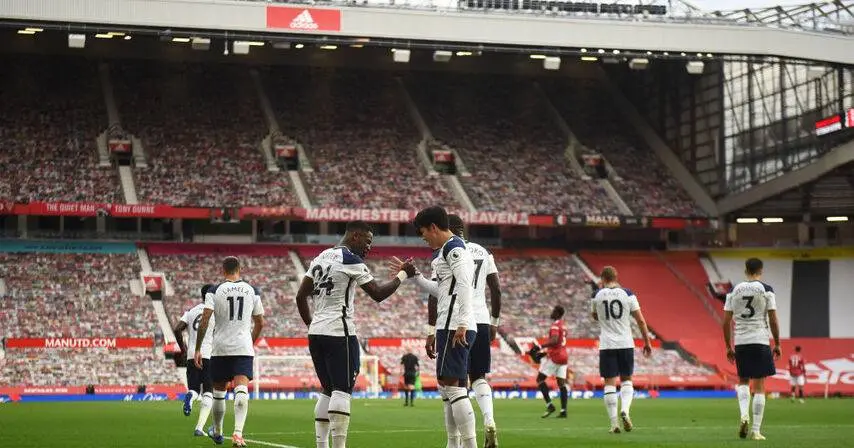
Why is a Higher Strike Rate More Apparent in the Powerplay?
Different phases of the powerplay allow equal opportunities to both the playing sides. Read the blog to find out why powerplays bring higher strike rates.
Cricket is all about scoring, stopping runs, and protecting or taking wickets. It is enough to sum up the sport's essence. Because both playing teams have agendas and goals in the match to fulfill and win, the competition becomes tough. The game becomes more restricted.
To ease the curb and allow the runs to multiply, powerplay plays a crucial role. Usually, the increase in batting strike rate is more evident in the powerplay.
To understand this statement in a more precise manner, it is important to understand the explanation of these two terms: powerplay and strike rate.
What is a Strike Rate?
There are two types of strike rates: batting and bowling. In simpler terms, a strike rate is a statistical measurement that presents the ability of a player to score runs or take wickets in a particular game format.
The batting strike rate is defined as the ratio of scored runs to balls played. Whereas the bowling strike rate is the ratio of the wickets taken to the balls delivered.
The following are the major factors that affect the strike rates of both the batting and bowling sides:
- Pitch conditions
- The strength of the opposition’s bowling
- Playing style
- The present situation of the match
What is a Powerplay?
There comes a time in the match when the fielding team has to remove the fielding restrictions, allowing the batting side to score more runs. This time period is a powerplay.
powerplay comes in three different phases, which largely apply to the ODI format:
Powerplay 1 (PP1)
This phase is considered the most crucial; it includes an initial ten overs in an ODI match and an initial six overs in the T20s. This phase allows for a maximum of two fielders to field beyond the 30-yard circle.
This phase enables the batting team to hit and score runs while also allowing the opposition to leave with a higher score.
Powerplay (PP2)
Soon, PP1 ends, and PP2 commences. This phase covers the inning's 11th to 40th overs. During this phase, a maximum of four players can field outside the 30-yard circle.
Powerplay (PP3)
This is the final phase of the powerplay, also known as death overs. This period ranges from the 41st to the 50th. The fielding team can place a maximum of five players outside the 30-yard circle.
Unlike PP1, this is the easiest period of the match for the bowlers, but it becomes tense for the batters.
Strike Rate and Powerplay
There is a relationship between strike rate and powerplay. Regardless of the phase of the powerplay, three of them are responsible for influencing both sides' performance. Each phase aims to make provisions and facilitate both sides.
PP1 aims to assist the batting side by reducing the number of fielders outside the circle, allowing batsmen to hit aggressively.
PP2 is more balanced. Batters still have the opportunity to smash runs, while bowlers now have four fielders instead of two outside the circle.
While PP3 is more inclined towards the bowling side, With five players outside the circle, bowlers have a higher chance of taking wickets.
How Powerplay Brings Higher Strike Rates?
Having a few players near the boundary allows the batting side to add more runs to the scoreboard. Three major factors shed light on the reasons why a higher strike rate is more apparent in the powerplay.
Aggressive Batting
Powerplay, particularly PP1, allows batters to play aggressively and hit runs. It's the best time for batters to add runs quickly to the scoreboard. All the batters need to do is clear out the fielders in the inner circle.
powerplay allows one to play aggressively, so it always makes sense to play mindfully. Taking calculated risks always pays off! Bowlers often bowl average deliveries to stop runs, while batsmen usually take advantage of the same in powerplay.
Playing on the Field
Playing on the field is another factor that helps add runs to the scoreboard. The mantra for high scores during the powerplay is to find the field gaps and let the bowl pass through them.
powerplay hinders the bowling team from moving the field. As a result, it becomes easier for the batsmen to identify the gaps, measure the bowl's length, and hit the ball through them.
High-Scoring Partnership
Protecting wickets in the early overs of the match is extremely crucial. It helps to establish the match's momentum. powerplay helps establish momentum, which eventually leads to high-scoring partnerships.
It is quite natural for the strike rate to increase as the partnership grows stronger.
Top Five Powerplay Scores in the IPL
The IPL is full of cricket action. The tournament is more of a warehouse for higher powerplay scores. Let’s look at the top five powerplay scores in IPL history.
Top Five Powerplay Scores in ODI
ODI cricket is a mix of Test and T20I cricket, delivering great team performances. Let’s take a look at the top five powerplay scores in ODI cricket.
New Zealand vs. Sri Lanka in 2015
Martin Guptill is unstoppable, making him one of the most deadly batsmen. The highest powerplay score in the ODI dates back to 2015, when New Zealand confronted Sri Lanka. The later team was whitewashed in just 117 runs.
For the Black Caps, it was an easy target score. The openers finished the game in just 8.2 overs at 118/0. Martin had the highest individual score in a powerplay with 93 off 30 deliveries. Tom Latham scored 17 out of 20.
Thanks to Martin’s incredible performance with a strike rate of around 310.00, New Zealand won the match.
Australia vs. New Zealand in 2023
David Warner and Travis Head spelled their magic in the 27th game of the ICC World Cup 2023 against New Zealand at Dharamshala, a recent event.
The openers added a total of 118 runs without any loss in the powerplay. Before the first five overs, Australia had reached 50. Travis scored 109 off 67 balls, and Warner scored 81 off 65, respectively.
New Zealand vs. England in 2015
This is New Zealand's third-best powerplay score. It happened in Wellington in 2015 against England during the World Cup. England scored only 123 runs. In response, Brendon McCullum, the captain, hit an 18-ball 50. Their first ten overs gave them a score of 116/2.
New Zealand won the game by scoring 125 runs in just 12.3 overs, with McCullum still not out on 77 off 25 balls. He hit 8 fours and 7 sixes.
West Indies vs. India in 2019
During the powerplay, the openers, Chris Gayle and Evin Lewis, scored 114 runs for the team. Chris scored 73 off 41 balls, and Lewis scored 43 off 29 balls. Rain limited the match to 35 overs. The West Indies scored 240/7.
In the end, India scored 256 runs in just 32.3 overs; the credit goes to an incredible century by Virat Kohli.
Australia vs. India in 2023
In this contest, Australia registered their fifth-highest powerplay score in ODI cricket at Visakhapatnam. India went all-out for 117 runs in 26 overs.
The Australians scored 112 runs in the powerplay and 121/0 in the 11 overs. Travis Head scored 51 off 30 balls, and Mitchell Marsh scored 66 off 36.




